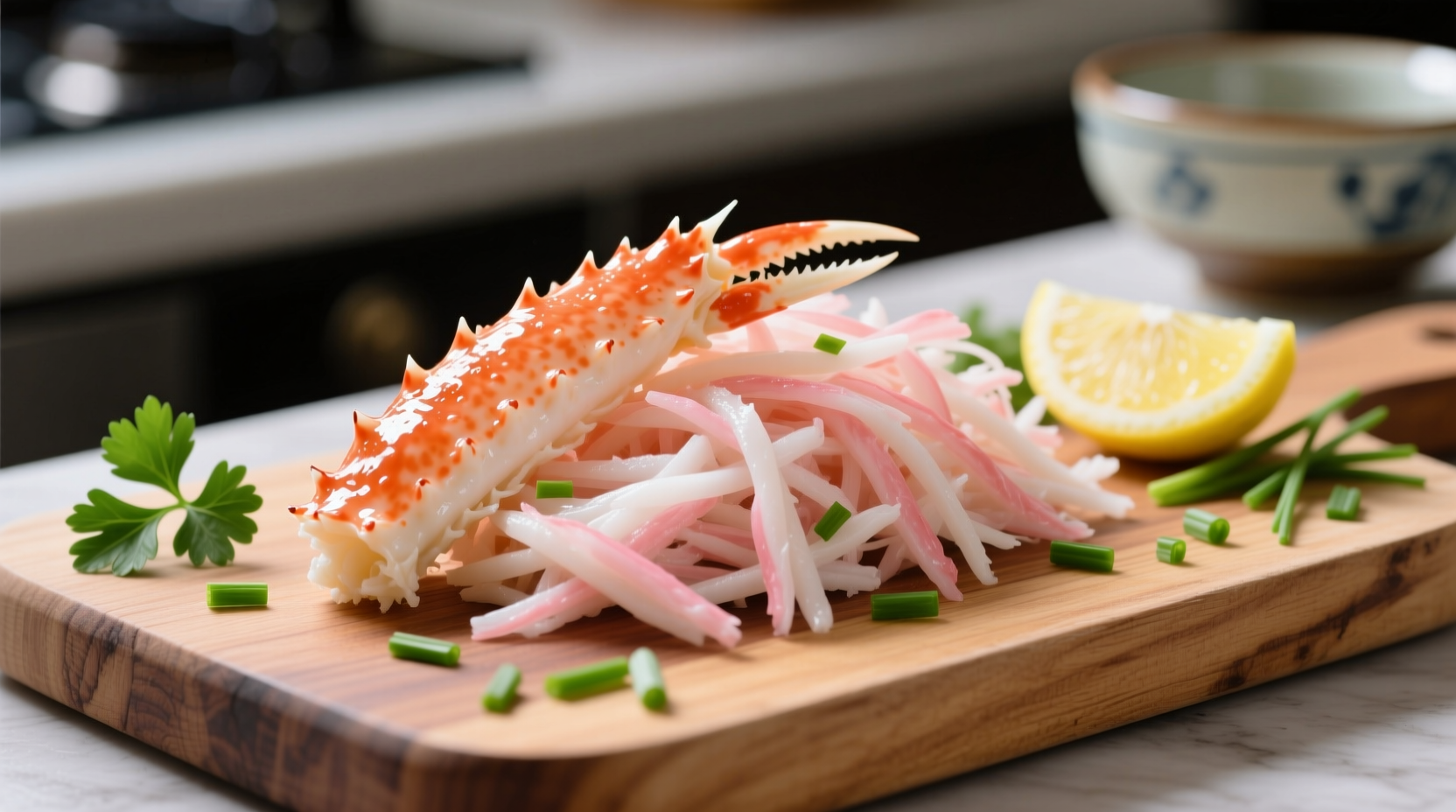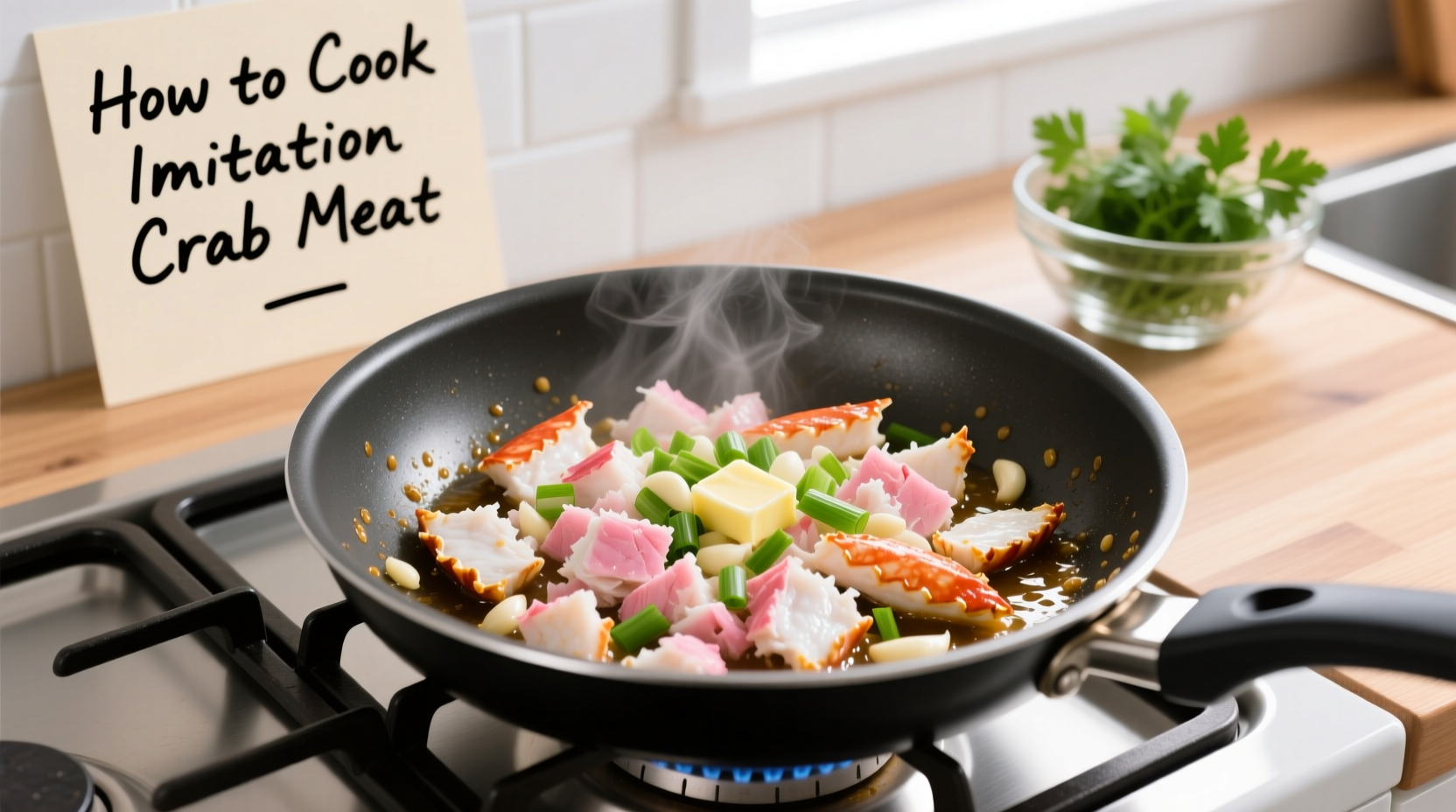Imitation crab meat cooks in just 2-5 minutes using gentle heat methods like steaming, light sautéing, or quick baking. Never boil or overcook it, as the delicate texture will become rubbery. For best results, thaw frozen imitation crab in the refrigerator overnight, handle it gently, and add it to dishes during the final minutes of cooking.
Discover how to transform this affordable seafood alternative into restaurant-quality dishes with minimal effort. Whether you're making California rolls, crab cakes, or a quick pasta salad, these professional techniques ensure perfect texture and flavor every time.
| Cooking Method | Time Required | Best For | Temperature Guide |
|---|---|---|---|
| Steaming | 2-3 minutes | Sushi, salads | Medium heat |
| Light Sauté | 3-4 minutes | Stir-fries, pasta | Medium-low heat |
| Baking | 4-5 minutes | Crab cakes, casseroles | 350°F (175°C) |
| Cold Preparation | 0 minutes | Cold salads, sandwiches | Room temperature |
Understanding Imitation Crab Meat Basics
Imitation crab, also known as surimi, is made from processed Alaskan pollock fish blended with starches, egg whites, and flavorings. According to the U.S. Food and Drug Administration (FDA), surimi seafood products must contain at least 36% fish protein to be labeled as imitation crab. Unlike real crab, it's pre-cooked during manufacturing, meaning you're only reheating it rather than cooking from raw.
This versatile ingredient offers a sustainable and budget-friendly alternative to real crab, with consistent texture and year-round availability. When selecting imitation crab, look for products with minimal additives and check the ingredient list for high fish content. Premium varieties contain up to 60% fish protein compared to basic versions with 36-40%.
Proper Preparation Techniques
Before cooking imitation crab meat, proper preparation ensures optimal results:
- Thawing: Always thaw frozen imitation crab in the refrigerator overnight (8-12 hours). Rapid thawing methods like microwaving cause uneven texture and moisture loss.
- Handling: Treat imitation crab gently like real crab meat. Use clean hands or utensils to avoid compressing the delicate strands.
- Draining: After thawing, place on paper towels for 5 minutes to absorb excess moisture that could dilute flavors.
- Seasoning Timing: Add salt and acidic ingredients like lemon juice only during the final plating stage to prevent texture breakdown.

Cooking Methods for Perfect Results
Steaming Method for Sushi and Salads
Steaming preserves the delicate texture while gently warming the product. Place imitation crab in a single layer in a bamboo or metal steamer basket. Steam over simmering water for exactly 2-3 minutes until warmed through. This method works best for California rolls, crab salad fillings, or as a topping for poke bowls. Never steam longer than 3 minutes, as excessive heat causes the binding proteins to tighten and become rubbery.
Light Sauté Technique for Stir-Fries
For Asian-inspired dishes, use medium-low heat with minimal oil. Heat 1 teaspoon of neutral oil (like avocado or grapeseed) in a non-stick pan. Add imitation crab and cook for 3-4 minutes, turning gently with a silicone spatula. Add sauces during the final minute to prevent moisture absorption. This technique works perfectly for crab fried rice, lo mein, or quick vegetable stir-fries. Professional chefs recommend adding imitation crab after other ingredients are nearly cooked to maintain optimal texture.
Baking for Crab Cakes and Casseroles
When incorporating imitation crab into baked dishes, use moderate temperatures. For crab cakes, mix gently with binders and seasonings, then bake at 350°F (175°C) for 4-5 minutes per side until golden. In casseroles, add imitation crab during the final 5 minutes of baking. Higher temperatures cause the starch binders to separate from the fish protein, resulting in a watery texture. According to culinary research from the Culinary Institute of America, baking imitation crab above 375°F (190°C) significantly degrades its texture quality.
Cold Preparation for Instant Dishes
Since imitation crab is pre-cooked, many applications require no additional cooking. For cold salads, sandwiches, or sushi rolls, simply drain excess moisture and incorporate directly. Toss with dressings just before serving to prevent sogginess. This method preserves the natural sweet flavor and tender-crisp texture that makes imitation crab so versatile.
Pro Tips from Professional Kitchens
Master these techniques to elevate your imitation crab dishes:
- Flavor Enhancement: Add a pinch of Old Bay seasoning or a dash of fish sauce to boost seafood flavor without overpowering the delicate taste.
- Texture Preservation: When mixing into salads or cakes, use a folding motion rather than stirring to maintain the flake structure.
- Moisture Control: If your imitation crab seems dry, mix with 1 teaspoon of mayonnaise per 8 ounces to restore moisture without altering flavor.
- Color Preservation: Add imitation crab to hot dishes during the final plating stage to maintain its vibrant orange-pink hue.
Avoid These Common Mistakes
Prevent disappointing results by avoiding these frequent errors:
- Overcooking: Imitation crab only needs warming, not cooking. Extended heat exposure makes it tough and rubbery.
- High Heat Methods: Never boil, deep-fry, or broil imitation crab as these methods destroy its delicate structure.
- Acidic Marinades: Avoid marinating in citrus or vinegar-based liquids for more than 15 minutes, as acids break down the protein matrix.
- Refreezing: Once thawed, imitation crab should not be refrozen as ice crystals damage the texture permanently.
Storage Guidelines for Maximum Freshness
Proper storage extends imitation crab's shelf life and maintains quality. Unopened packages last 2-3 months frozen at 0°F (-18°C). After thawing, use within 3 days when stored in an airtight container in the coldest part of your refrigerator. Never leave imitation crab at room temperature for more than 2 hours. For best results, portion before freezing to avoid repeated thawing cycles that degrade texture.
Frequently Asked Questions
Here are answers to common questions about cooking imitation crab meat:











 浙公网安备
33010002000092号
浙公网安备
33010002000092号 浙B2-20120091-4
浙B2-20120091-4